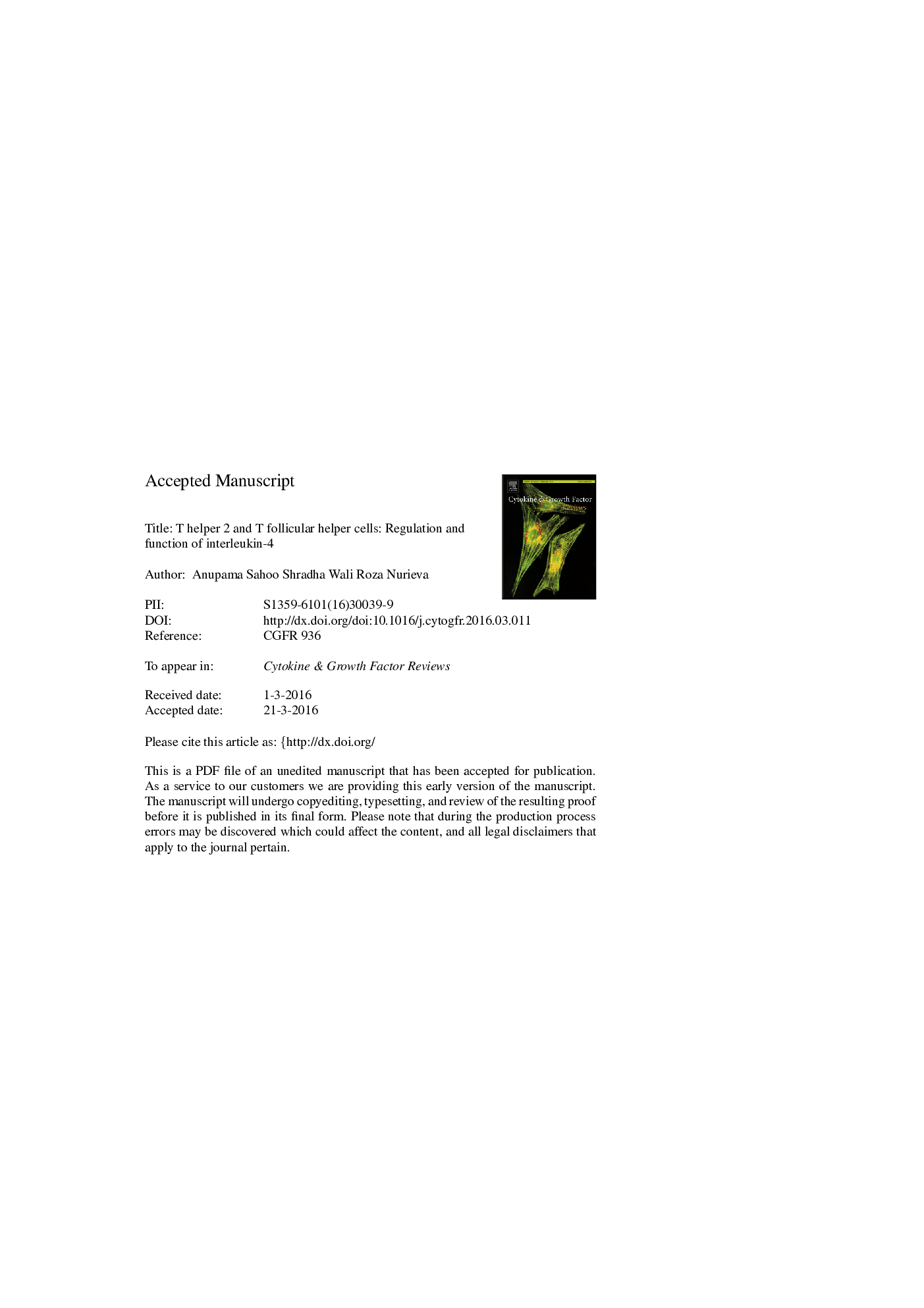| Article ID | Journal | Published Year | Pages | File Type |
|---|---|---|---|---|
| 8466404 | Cytokine & Growth Factor Reviews | 2016 | 33 Pages |
Abstract
Type 2 immunity is characterized by expression of the cytokines interleukin (IL)-4, IL-5, IL-9 and IL-13, which can function in mediating protective immunity in the host or possess a pathogenic role. T helper (Th) 2 cells have emerged to play a beneficial role in mediating anti-parasitic immunity and are also known to be key players in mediating allergic diseases. In addition to the Th2 cells, recent studies have identified T follicular helper (Tfh) cells as an alternative source of IL-4 to regulate type 2 humoral immune responses, indicating that Th2 and Tfh cells exhibit overlapping phenotypical and functional characteristics. Th2 and Tfh cells appear to utilize distinct mechanisms for regulation of IL-4 expression; however unlike Th2 cells, the regulation and function of Tfh-derived IL-4 is not yet fully understood. Understanding of the molecular mechanisms for IL-4 expression and function in both cell subsets will be beneficial for the development of future therapeutic interventions.
Keywords
NODIRF4ICOSTh2TSLPBATFGITRB cell lymphoma 6TFHLCRBCL6T helper 2VCAMThymic stromal lymphoproteinNFATGFIMIPTCFERKSignal Transduction and Activator of TranscriptionTCrSTATSLAMimmunoglobulin interleukininterleukin-4SeaCNSconserved non-coding sequenceNon-obese diabeticTranscriptionHypersensitive sitesSAPInterferon regulatory factor 4T cell factorNuclear Factor of Activated T Cellsactivating proteinInducible co-stimulatorGerminal centerlocus control regionsignaling lymphocytic activation moleculevascular cell adhesion moleculemacrophage inflammatory proteinT follicular helperextracellular signal-regulated kinaseT cell receptorGlucocorticoid-induced tumor necrosis factor receptor
Related Topics
Life Sciences
Biochemistry, Genetics and Molecular Biology
Cell Biology
Authors
Anupama Sahoo, Shradha Wali, Roza Nurieva,
